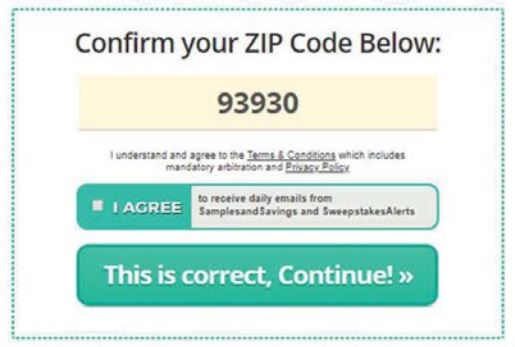Il 9° circuito conferma una sentenza californiana per cui non è validamente prestato il consenso alla clausola arbitrale , quando l’utente si sia limitato a premere un pulsante I AGREE , preceduto da minuscolo richiamo dal tenore << “I understand and agree to the Terms & Conditions which includes mandatory arbitration and Privacy Policy.” >>.
Si tratta di oggetto del connseso esposto documentalmente in caratteri troppo poco visibili, per cui il connseso non può dirsi validamente formato (manca la reasonably conspicuous notice).
In particolare << The webpages
reproduced in Appendix A and Appendix B did not provide
reasonably conspicuous notice of the terms and conditions
for two reasons. First, to be conspicuous in this context, a
notice must be displayed in a font size and format such that
the court can fairly assume that a reasonably prudent Internet
user would have seen it. See id. at 30; Nguyen, 763 F.3d at 1177. The text disclosing the existence of the terms and
conditions on these websites is the antithesis of conspicuous.
It is printed in a tiny gray font considerably smaller than the
font used in the surrounding website elements, and indeed in
a font so small that it is barely legible to the naked eye. The
comparatively larger font used in all of the surrounding text
naturally directs the user’s attention everywhere else.
And the textual notice is further deemphasized by the overall
design of the webpage, in which other visual elements draw
the user’s attention away from the barely readable critical
text.
Far from meeting the requirement that a webpage must
take steps “to capture the user’s attention and secure her
assent,” the design and content of these webpages draw the
user’s attention away from the most important part of the
page. Nguyen, 763 F.3d at 1178 n.1.
Website users are entitled to assume that important
provisions—such as those that disclose the existence of
proposed contractual terms—will be prominently displayed,
not buried in fine print.
Because “online providers have
complete control over the design of their websites,” Sellers
v. JustAnswer LLC, 289 Cal. Rptr. 3d 1, 16 (Ct. App. 2021),
“the onus must be on website owners to put users on notice
of the terms to which they wish to bind consumers,” Nguyen,
763 F.3d at 1179.
The designer of the webpages at issue here
did not take that obligation to heart.
Second, while it is permissible to disclose terms and
conditions through a hyperlink, the fact that a hyperlink is
present must be readily apparent. Simply underscoring
words or phrases, as in the webpages at issue here, will often
be insufficient to alert a reasonably prudent user that a
clickable link exists. See Sellers, 289 Cal. Rptr. 3d at 29.
Because our inquiry notice standard demands
conspicuousness tailored to the reasonably prudent Internet user, not to the expert user, the design of the hyperlinks must
put such a user on notice of their existence. Nguyen,
763 F.3d at 1177, 1179.
A web designer must do more than simply underscore
the hyperlinked text in order to ensure that it is sufficiently
“set apart” from the surrounding text. Sellers, 289 Cal. Rptr.
3d at 29.
Customary design elements denoting the existence
of a hyperlink include the use of a contrasting font color
(typically blue) and the use of all capital letters, both of
which can alert a user that the particular text differs from
other plain text in that it provides a clickable pathway to
another webpage. See id. (finding “Terms of Service”
insufficiently conspicuous because it did not use all capital
letters or contrasting font color).
Consumers cannot be
required to hover their mouse over otherwise plain-looking
text or aimlessly click on words on a page in an effort to
“ferret out hyperlinks.” Nguyen, 763 F.3d at 1179. The
failure to clearly denote the hyperlinks here fails our
conspicuousness test. Cf. Meyer, 868 F.3d at 78–79 (finding
hyperlinks reasonably conspicuous because they were both
in blue and underlined). >>
Esito condivisibile: e probabilmente non solo per il diritto dei consumatori ma ancbe per il diritto contrattuale generale.
Le due videate contenenti il minuscolo richiamo alle terms and conditiions son questa

e questa

(notizia e link alla sentenza dal post di Venkat Balasubram nel blog del prof. Eric Goldman)